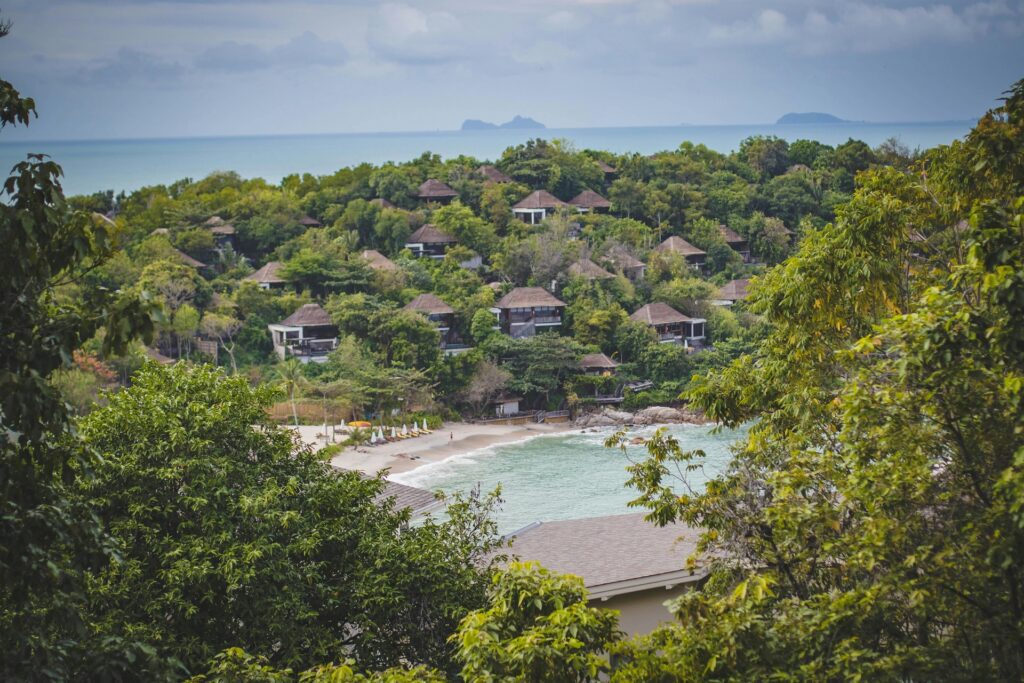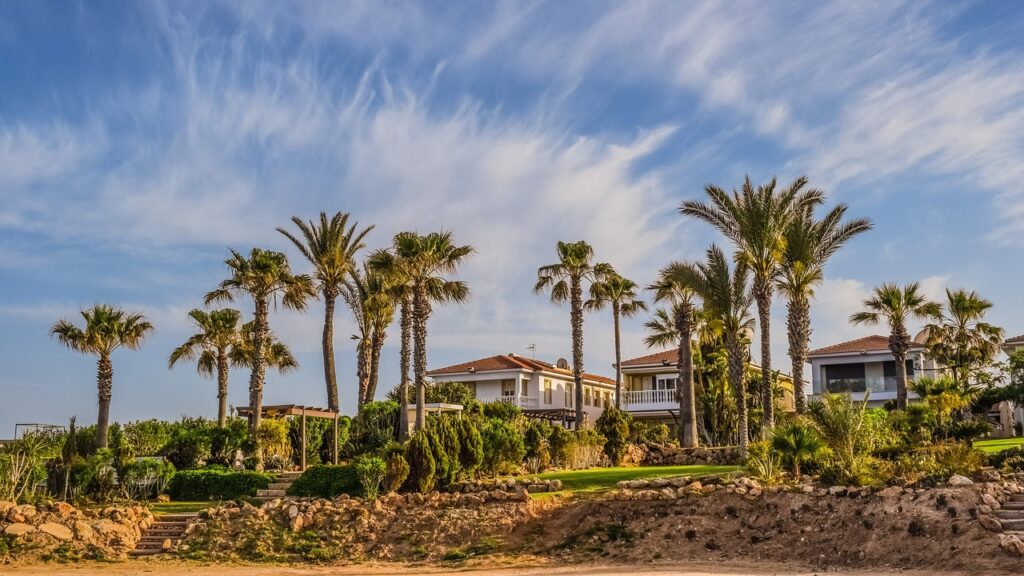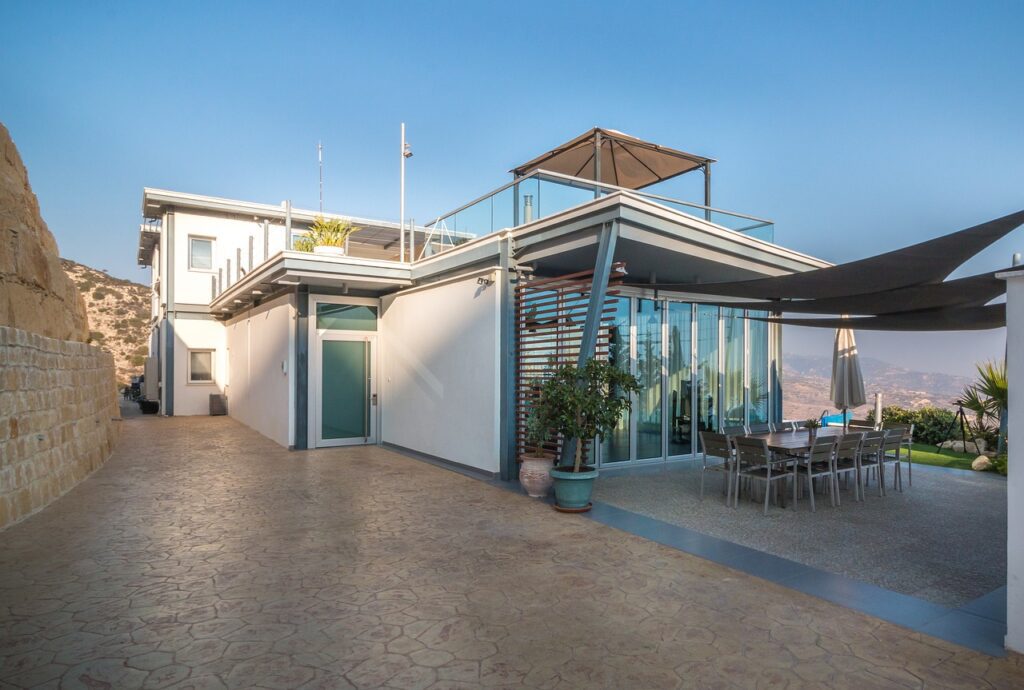As our world grows increasingly aware of the need to protect the environment, the demand for eco-friendly construction is more prominent than ever, particularly in tropical paradises like Koh Samui. More than just a trend, building sustainable villas has become a way for developers and homeowners to make a positive impact on both the environment and the communities around them. In Koh Samui, with its lush landscapes and rich biodiversity, creating villas that blend seamlessly with nature while minimizing their ecological footprint is not only a responsibility but also an opportunity to set a new standard in tropical living.

Building eco-friendly villas doesn’t just mean reducing harm to the environment. It also means creating homes that offer long-term benefits, such as energy efficiency, lower maintenance costs, and healthier living spaces. By incorporating green architecture, sustainable materials, and innovative energy-efficient solutions, villa owners and developers can create homes that are not only beautiful and luxurious but also environmentally friendly. These practices don’t just benefit the planet—they can also lead to significant cost savings over time. Let’s explore the key approaches and materials that will help you build an eco-friendly villa in Koh Samui that’s as kind to the earth as it is to your wallet.
Key Approaches to Sustainable Villa Design
Building a sustainable villa in Koh Samui starts with adopting thoughtful design principles that focus on energy efficiency, resource conservation, and harmonious integration with the environment. These approaches ensure that the villa minimizes its environmental impact while providing a comfortable, eco-friendly living space.
Energy-Efficient Design
One of the foundational elements of eco-friendly architecture is energy efficiency. In tropical climates like Koh Samui, where heat and humidity are constants, keeping the villa cool naturally is essential for reducing energy consumption. An effective strategy for achieving this is through passive cooling, which minimizes the need for air conditioning by taking advantage of the natural environment.
Passive cooling relies on intelligent design features such as cross-ventilation, where strategically placed windows, doors, and vents create natural airflows that cool the interior spaces. Natural shading is another critical element, often achieved by planting trees or installing awnings that block direct sunlight from overheating the building. Additionally, thermal mass—using materials that absorb and slowly release heat—helps maintain comfortable temperatures indoors, making the villa more energy-efficient throughout the day.
Insulation is also key to ensuring that the villa remains energy-efficient. Installing insulating materials in the walls and roofs helps regulate indoor temperatures, reducing the need for air conditioning and lowering energy use. This not only cuts down on electricity bills but also significantly reduces the villa’s carbon footprint. By prioritizing these energy-efficient design strategies, homeowners can enjoy cooler, more comfortable living spaces while supporting a sustainable lifestyle.
Water Conservation and Management
Given the limited availability of freshwater on islands like Koh Samui, water conservation is a crucial element of sustainable villa design. One of the most effective ways to reduce water usage is by integrating rainwater harvesting systems into the villa’s design. These systems collect and store rainwater, which can then be used for various purposes, including irrigating gardens, cleaning, and other non-potable uses. By utilizing natural rainfall, villa owners can reduce their reliance on the island’s freshwater supply, particularly during dry seasons when water shortages may occur.
Another effective water-saving strategy is incorporating greywater recycling systems. This system reuses water from sinks, showers, and washing machines for purposes like garden irrigation or flushing toilets. By recycling greywater, villas can significantly cut down on waste, lower water bills, and reduce their overall environmental impact.
Both rainwater harvesting and greywater systems allow homeowners to embrace a sustainable water management approach that not only preserves the island’s valuable resources but also contributes to the long-term eco-friendliness of the villa. These water conservation efforts are vital in creating a home that supports a greener, more sustainable lifestyle while respecting the natural limitations of Koh Samui’s water supply.
Eco-Friendly Materials for Villa Construction
Selecting sustainable building materials is key to minimizing the environmental impact of villa construction, especially in an ecologically sensitive area like Koh Samui. Using locally sourced, renewable, or recycled materials reduces the carbon footprint associated with the transportation and production of conventional building materials. By integrating eco-friendly options, homeowners can ensure that their villa is not only beautiful but also environmentally responsible. Below are some of the most eco-friendly materials to consider when building a villa in Koh Samui.
Bamboo and Timber
Bamboo is one of the most sustainable materials available, making it an ideal choice for construction in tropical climates like Koh Samui. As a fast-growing plant, bamboo is highly renewable and can be harvested without contributing to deforestation. Its impressive strength and flexibility make it suitable for a wide range of uses, from structural elements and roofing to furniture. Additionally, bamboo’s lightweight nature makes it easy to transport, reducing the carbon footprint even further.
In a similar vein, certified timber from responsibly managed forests is another excellent eco-friendly material. When sourced locally, timber helps reduce emissions associated with long-distance transportation, supporting the local economy and minimizing environmental impact. Timber also provides natural insulation, which helps maintain a comfortable indoor climate in your villa, reducing the need for excessive heating or cooling. This can lead to greater energy efficiency and lower utility bills.
Both bamboo and timber offer a blend of sustainability and aesthetic appeal, ensuring that the villa is not only eco-friendly but also aligns with the natural beauty of Koh Samui.

Recycled and Reclaimed Materials
Incorporating recycled or reclaimed materials is another crucial aspect of sustainable villa design. Using materials like recycled concrete, stone, or reclaimed wood reduces the demand for new resources and significantly lowers the carbon footprint of the construction process. For example, recycled concrete can be used for building walls or flooring, providing durability while reducing the environmental cost associated with producing new concrete.
Reclaimed wood is another versatile material that can be used for both structural elements and interior design. Whether it’s used for beams, flooring, or decorative finishes, reclaimed wood adds a unique character to the villa, often offering a rustic charm or modern elegance depending on the design approach. By reusing existing materials, homeowners can prevent waste and reduce the impact on the environment, all while adding distinctive touches to their villa.
These sustainable materials not only contribute to a greener construction process but also enhance the overall design by incorporating natural, eco-friendly elements that complement Koh Samui’s tropical landscape.
Sustainable Energy Solutions
A crucial element of constructing an eco-friendly villa in Koh Samui is adopting renewable energy solutions. These technologies significantly reduce reliance on fossil fuels, promoting a more sustainable lifestyle while helping villas achieve a lower environmental impact over time. By integrating renewable energy and natural design features, homeowners can reduce both their carbon footprint and energy costs, creating a villa that is not only eco-friendly but also energy-efficient.
Solar Power Integration
Given the island’s abundant sunshine, solar power is one of the most practical and effective renewable energy sources for powering villas in Koh Samui. Installing solar panels can drastically lower electricity bills while providing a reliable source of clean energy. Solar power can be harnessed for a wide range of uses, from heating water and powering air conditioning to providing electricity for everyday appliances.
Modern solar power systems are designed with energy storage capabilities, allowing homeowners to store excess energy generated during peak sunlight hours for use at night or on cloudy days. This increases the villa’s overall energy efficiency, ensuring a consistent supply of power while minimizing reliance on the grid. By integrating solar energy, villa owners can enjoy significant cost savings and contribute to a greener future.
Natural Lighting and Ventilation
In addition to using solar power, maximizing natural lighting is a simple but effective way to reduce energy consumption. By incorporating large windows, skylights, and open spaces into the villa’s design, you can take advantage of the island’s natural light, reducing the need for artificial lighting during the day. This approach not only lowers energy usage but also creates a bright, airy, and inviting living space that aligns with eco-friendly principles.
Along with natural lighting, proper ventilation is essential for maintaining a comfortable indoor climate without over-relying on air conditioning. Smart architectural designs that promote cross-ventilation—using strategically placed windows, doors, and vents—encourage fresh air to flow freely through the villa, naturally cooling the space. This reduces the need for energy-intensive cooling systems, making the villa more sustainable while enhancing the overall living experience.
By integrating solar power, natural lighting, and cross-ventilation, villa owners in Koh Samui can significantly reduce their environmental impact, lower energy costs, and create a more sustainable living environment.
Heveatecture’s Commitment to Sustainable Villa Design in Koh Samui
Our team believe that building in harmony with nature is not only a responsibility but a privilege, especially in a location as beautiful and delicate as Koh Samui. Our approach to sustainable villa design goes beyond aesthetics; it’s about creating spaces that respect the environment and enhance the living experience for homeowners. We work closely with clients to ensure that every villa we build reflects the principles of green architecture, from the materials used to the energy solutions integrated.

Using Eco-Friendly Materials and Practices
One of our core commitments at Heveatecture is incorporating eco-friendly materials into every project. We prioritize sourcing local and sustainable materials like bamboo and certified timber, reducing the carbon footprint of transportation and supporting local industries. By utilizing recycled concrete and reclaimed wood, we give new life to existing materials, ensuring that our projects contribute to a circular economy and minimize environmental waste.
Partnering with Experts in Renewable Energy
To ensure our villas are not only beautiful but also energy-efficient, we collaborate with experts in renewable energy systems, including solar power and water conservation solutions. This allows us to integrate solar panels, rainwater harvesting, and greywater recycling into our villa designs, providing homeowners with cutting-edge technologies that reduce both costs and environmental impact.
Our goal is to create villas that align with the natural beauty of Koh Samui, offering a seamless blend of luxury, sustainability, and innovation. With Heveatecture, you can be confident that your villa will not only meet your aesthetic and comfort needs but will also contribute positively to the environment.
Conclusion
Building an eco-friendly villa in Koh Samui not only aligns with the global shift toward sustainability but also offers long-term benefits for both the environment and villa owners. By adopting energy-efficient design, incorporating sustainable materials like bamboo and recycled components, and integrating renewable energy solutions such as solar power, villas can significantly reduce their environmental footprint while maintaining modern comfort.

Water conservation methods, like rainwater harvesting and greywater recycling, further contribute to a sustainable lifestyle, addressing the challenges of limited freshwater resources on the island. The use of natural lighting and cross-ventilation enhances the villa’s energy efficiency, reducing reliance on artificial systems.
Ultimately, creating a sustainable villa in Koh Samui is not just a responsible choice but a forward-thinking investment that offers cost savings, a reduced carbon footprint, and a closer connection to the natural beauty of the island.
FAQs About Sustainable Villa Design in Koh Samui
Building an eco-friendly villa in Koh Samui offers numerous advantages, including a reduced environmental impact, lower energy and water bills, and a healthier, more comfortable living environment. By using sustainable materials and energy-efficient technologies, homeowners can minimize their carbon footprint while creating a space that is in harmony with nature.
To make your villa more energy-efficient, you can incorporate passive cooling techniques, such as optimizing cross-ventilation and using natural shading. Additionally, installing solar panels for energy and insulation materials in walls and roofs can drastically reduce the need for air conditioning, lowering overall energy consumption and utility costs.
In Koh Samui, some of the best sustainable materials for villa construction include bamboo, certified timber, recycled concrete, and reclaimed wood. These materials are well-suited for tropical climates, offering durability, low environmental impact, and a natural aesthetic that complements the surrounding environment.
Rainwater harvesting systems collect and store rainwater from rooftops, which can then be used for non-potable purposes, such as irrigation or flushing toilets. This reduces reliance on the island’s freshwater supply and contributes to overall water conservation.
Yes, solar power is an excellent option for villas in Koh Samui due to the island’s abundant sunshine. Installing solar panels allows villa owners to generate clean, renewable energy, reducing dependence on the grid and lowering electricity bills.
To reduce water usage, you can install greywater recycling systems, which reuse water from sinks and showers for purposes like garden irrigation. Additionally, using low-flow fixtures and implementing a rainwater harvesting system can significantly cut down on water consumption.
While some sustainable materials may have higher upfront costs, they typically result in long-term savings. These savings come from increased energy efficiency, reduced maintenance, and the durability of eco-friendly materials, making them a cost-effective choice over time.
Passive cooling refers to design strategies that naturally cool a building by utilizing natural airflow, shading, and thermal mass, without the need for mechanical systems like air conditioning. It’s important because it helps reduce the villa’s energy consumption, particularly in tropical climates.
To increase natural lighting, incorporate large windows, skylights, and open spaces into your villa’s design. These features reduce the need for artificial lighting during the day, cutting down on energy use and creating a brighter, more welcoming space.
Bamboo is a highly sustainable material because it is a fast-growing, renewable resource. It can be harvested without causing deforestation, making it an eco-friendly choice for construction. Bamboo’s strength and versatility make it ideal for use in structural elements, roofing, and furniture.
